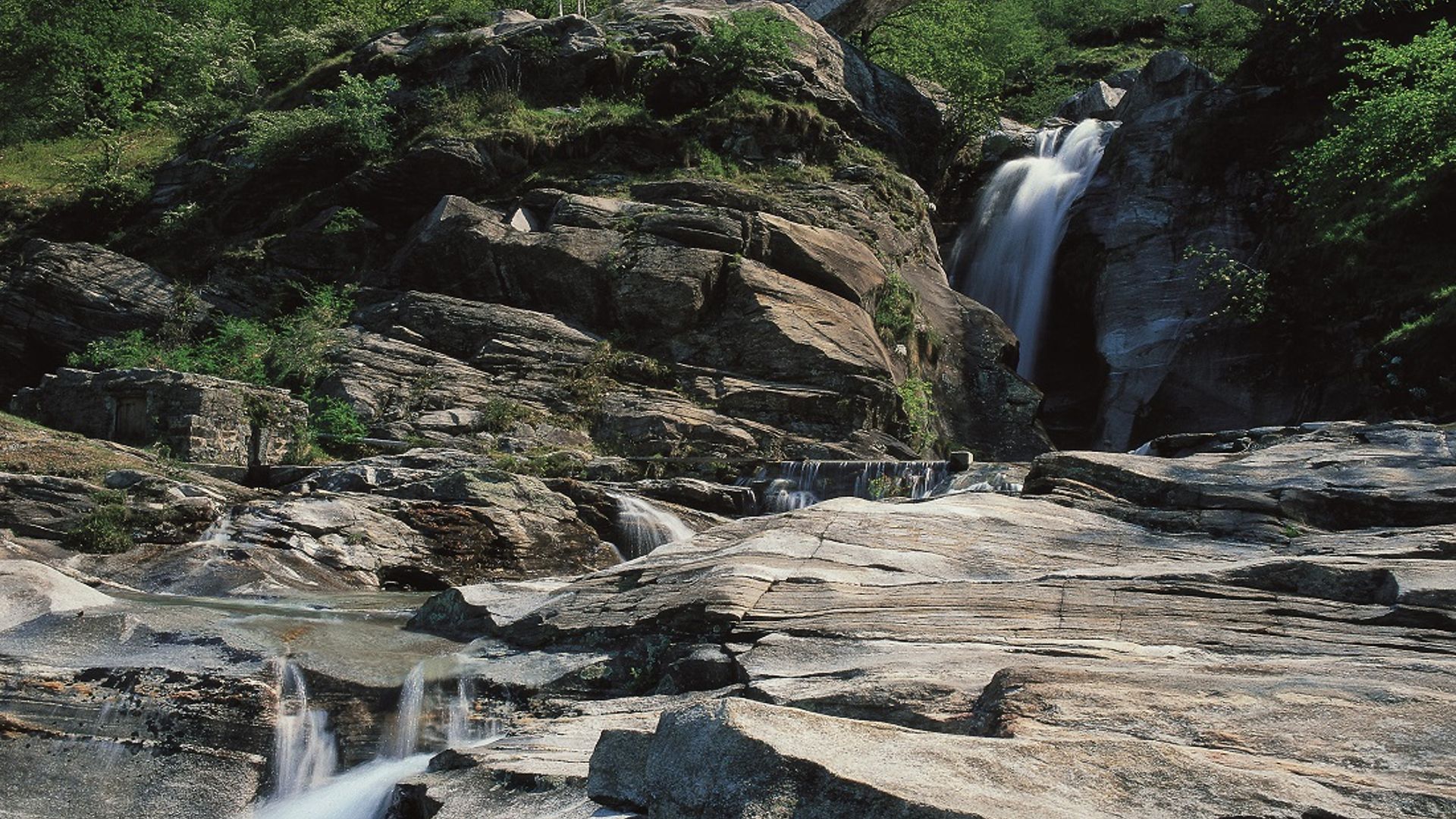Buzza di Biasca
A natural disaster and its impact in Biasca
The “Buzza di Biasca” claimed hundreds of lives and devastated the whole of Upper Ticino. Was witchcraft involved in this natural disaster? No, the federal judges found.
On September 30, 1513, the sky fell on the heads of the inhabitants of Biasca - at least it must have felt that way. A gigantic mass of rock detached itself from the western flank of the 2329-metre-high Pizzo Magno. Tons of stone and debris thundered down into the valley, burying numerous houses beneath them. The avalanche of debris was only stopped by the rock face on the opposite side of the valley. From then on, a dam of boulders and rubble over sixty meters high blocked the entrance to the Blenio Valley at “Ablentschen”, as Biasca was called by the Swiss at the time. Thus disaster took its course.
The Brenno river was dammed by the scree. The villages of Malvaglia, Semione and Loderio sank into the floods of the reservoir. While the rockslide had previously been a tragedy for the Blenio Valley, on May 20, 1515 it became one of the greatest disasters in Swiss history. On that day, the dam unexpectedly gave way to the pressure of the masses of water. Several flood waves rolled over Biasca and the Riviera to Bellinzona and from there into Lake Maggiore. They brought death and destruction. Depending on the source, between 200 and 600 people lost their lives in this tsunami.
The force of the water masses was impressively evident in Bellinzona. There, the Dukes of Milan had not only built three castles, but also a four-metre-thick wall that closed off the entire valley floor - including a fortified bridge over the River Ticino. For more than a moment, the Murata and Torretta bridges withstood the pressure of the floods before they burst. This temporary blockage caused the water to back up at the obstacle and flood Bellinzona.
The masses of water reached “all the cellars and parlors in the square”, wrote Rudolf Senser, who was on his way back to central Switzerland as the Swiss envoy in Milan when he was surprised by the flood wave in Bellinzona. In Bellinzona alone, over one hundred people died, including twenty Swiss soldiers. In addition, the tidal wave destroyed around four hundred buildings “that neither stone nor wood are left standing”. Senser was so shocked by the scale of the disaster that he struggled to find the right words: “... then it's unbelievable who didn't see it!”
The consequences of the “Buzza di Biasca”, as the catastrophe was called (in Lombard dialect, the term “buzza” refers to the material washed up during floods), affected many generations to come. The destruction of the Torretta bridge over the Ticino had the most serious impact. This put the town of Locarno on the economic sidelines. From then on, trade across Lake Maggiore had to be conducted via Magadino on the left flank of the valley. For Locarno, according to Ticino historian Eligio Pometta, “the catastrophe had economic consequences that lasted for centuries”. It was not until 1813, when Ticino was an independent canton rather than a bailiwick of the Bernese Confederation, that the Grand Council decided to rebuild the bridge near Bellinzona.
Given the far-reaching consequences, it is not surprising that nasty rumors about the cause of the disaster soon began to circulate. It was rumored that God had punished the people of Biasca with the rockslide because they had indulged in sodomy. However, the people's anger was first directed at the inhabitants of the Blenio Valley. One conspiracy theory was that they had commissioned a sorcerer to free them from the reservoir. This was fueled by the fact that the Bleniesi had decided at a meeting in the cemetery on April 22, 1515 to give a certain Giovannino Balestrerio from Milan the mandate to drain the water from the lake. But before the hydraulics expert found his way into the valley, the dam burst. No wonder, some people thought, that the people of Blenies had magically got rid of the reservoir - at the expense of the population living downstream.
Two years later, this led to a lawsuit in Bellinzona. The plaintiff was the municipality of Biasca, which accused the municipality of Malvaglia of having caused damage to the Riviera through witchcraft. On June 3, 1517, the federal judges from Uri, Schwyz and Unterwalden heard the case. In the end, they believed the version of the people of Blenio, who claimed that they had wanted to drain the lake by means of “arte mechanica et non arte magica”, i.e. by means of mechanical and non-magical art. The inhabitants of the Blenio Valley were acquitted of the accusation of witchcraft and black magic. However, doubts and mistrust remained for a long time - as did the imposing cone of rubble at the entrance to the Blenio Valley, which is still clearly visible today.
Experience
Part of the Buzza di Biasca site was renaturalized with the excavated material from the Gotthard Base Tunnel. Cellars were created under the huge boulders in the past. Today, the name “Via dei Grotti” in Biasca says it all. It is home to some of the most beautiful grottos in Ticino: the Grotto Petronilla, the Grotto Pini, the Grotto del Lino, the Grotto del Mulo and the Ristorante Grotto Greina. Guests are spoiled for choice as to where they want to stop for a bite to eat.
